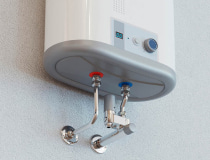Anchoring your boat safely and securely at night is essential for a successful boating experience. Knowing how to anchor a vessel correctly ensures you’ll be able to moor your boat in the same location when it comes time to retrieve it. This article will discuss how to prepare the anchor, tips for selecting an appropriate location, setting the anchor and checking its position. We’ll also provide some helpful advice on moderating the movement of the boat and retrieving the anchor when it’s time to move on.
Selecting an Appropriate Location
Once you have found an area suitable for anchoring, take some time to survey the area for potential hazards. This includes other boats in close proximity, which could potentially cause your boat harm should wind, or current bring them into contact with yours. Additionally, look for underwater obstacles, such as rocks and coral, which could cause damage to your vessel if you come in contact with them.
Setting the Anchor
How to Anchor a Boat at NightWhen setting your anchor, it is important to remember not to set it too tightly, as this could cause undue stress on both the anchor and the rode. The idea is to set it so that it will remain secure in the event of storms and bad weather but still be able to be retrieved easily. Lower the anchor over the side of your boat and into the water until it is laying flat on the bottom. Once you have done this, slowly start pulling on your rode until you feel resistance from the anchor taking hold. At this point, you can tighten up your line until it is secure.
Checking Your Position
Once your anchor is set and secure, it is important to check its position periodically throughout the night.
This should be done at least once per hour or anytime visibility changes significantly (such as when clouds roll in). To do this, turn on a flashlight or use an electric lantern to get an accurate reading of your location relative to other boats, docks, markers and obstacles.
Moderating Movement of The Boat
In order to ensure that your boat remains secure throughout the night, it’s important to moderate its movement relative to other vessels or objects within its vicinity. This can be accomplished by using bungee cords or springs in combination with secondary anchors, which can help reduce the swing radius if currents become too strong for a single anchor setup. Additionally, add extra fenders to help protect your boat from contact with other vessels.
Retrieving the Anchor
Once it’s time to move on, it’s important to retrieve your anchor. To do this, begin by pulling up on the rode until it becomes visibly loose from its position on the bottom. At this point, you can use an anchor retriever device, if necessary, to pull up any debris which may be stuck around or under it. Once you have freed the anchor from its location, slowly start to bring it back onboard and secure it in an appropriate storage location.
Conclusion
Anchoring at night can be a daunting task for those unfamiliar with proper procedure, but by following these easy steps, you’ll be able to ensure that your vessel remains securely moored in one location until you’re ready to move on. From preparing the anchor before setting it, through checking its position periodically and moderating movement of the boat with secondary anchors and fenders – anchoring a boat safely at night doesn’t need to be a stressful experience!


















